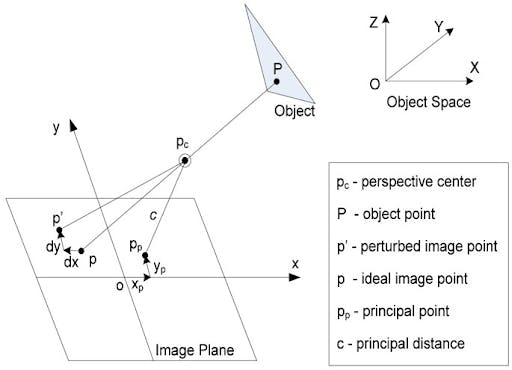Re-Opening the Office: 4 Recommendations for Safe Social Distancing

VergeSense is the industry leader in providing enterprises with a true understanding of their occupancy and how their offices are actually being used.
Cities around the world are relaxing COVID-19 stay-at-home orders and many companies in the US are beginning to open their office doors again. However, fears of a second wave of infections, CDC social distancing guidelines, local municipal regulations on occupancy limits in office buildings, and OSHA investigations into non-compliant companies, mean companies are under increasing pressure to design and implement safe return to work policies.
From gathering at the proverbial water cooler, to impromptu stopping by a colleague’s desk, to seamlessly moving between a solo space and shared rooms, most modern workplaces were designed to foster collaboration and movement, which can make social distancing today challenging. At VergeSense, we are uniquely capable of capturing and sharing crucial distancing information that can impact the effectiveness of return to work strategies.
We rapidly adapted our data model and analytics platform at the onset of the pandemic to tackle new COVID-19 challenges. Today, the same sensor capabilities that we used to measure workplace collaboration in a pre-COVID workplace are now being used to help our clients accommodate for social distancing as they re-open office locations. The solution will be mission critical as companies look to ensure their workplaces accommodate safe social distancing.
To find out what social distancing in the workplace really looks like, we recently analyzed 28 million+ sensor readings and over 6.2 million occupancy events across Fortune 1000 office space in North America, Europe, and Asia in the months leading up to COVID-19 and as offices began to re-open (Oct 2019- May 2020). We discovered some fascinating trends that executives everywhere will want to consider as they re-open their offices.
But first, how do we calculate the VergeSense Social Distancing Score?
The VergeSense Social Distancing Score Explained
VergeSense is in a unique position to both produce crucial information about the efficacy of ongoing office health efforts, and to recommend potentially better strategies. While some sensors count employees as they enter or exit, our ceiling-mounted, computer vision sensors go a step further. They can measure the physical distance between employees in the workplace and occupancy rates in a variety of space types. This data is aggregated and used to calculate the VergeSense Social Distancing Score.
Here’s how it works:
1. VergeSense sensors capture raw low-resolution optical data at regular intervals (every ten minutes for a battery sensor or every 30 seconds for wired sensors).
2. Raw data is processed by a computer vision model to produce localized coordinates for the center of mass of each person in the raw optical data.
3. These localized coordinates are mapped to corrected relative coordinates via a geometric transformation process called photogrammetry. This corrects for the curvature of the sensor's 3D capture and “flattens out” the raw data onto a 2D grid.
4. VergeSense computes the intra-sensor distances between all pairs of people detected by the sensor using corrected coordinates. This equation also requires the width and length of the sensor’s field of view and the ceiling height to convert coordinate-distance into a physical distance measured in feet or meters.

VergeSense processes pairwise distances — defined as the distance between two or more people — into a small subset consisting only of nearest-person distances. So for instance, in a room of 20 people there would be 190 pairwise distances (one for each pair of people) while there would only be 20 nearest-person distances. By analyzing nearest-person distances within a workplace, we can get the most accurate representation of whether or not employees are practicing social distancing.
Findings: Social Distancing Insights
Based on analysis of sensor data across Fortune 1000 office space, we’ve uncovered four valuable observations to consider as offices begin to re-open.
1. People are choosing to work solo
In the weeks prior to stay-at-home mandates taking effect in the US, we saw a pronounced drop in workplace attendance and in-person interactions. Employees around the country were opting to work from home or self-isolating in the office before official company policies were in place.
Now, as offices are beginning to re-open, we see the same cautious behavior continuing. In the months of April and May we saw an increase in single-person events (such as spending time alone at a desk, in a phone booth, or an alternative workspace) from 83% to 88%.
VergeSense Takeaway: Companies will want to consider ways to reassure their employees that it is safe to return to the office place. This may include making more solo working spaces available, providing greater visibility into available spaces, or limiting access to crowded spaces.
2. When people meet, they tend to cluster in large spaces, not spread out
When people collaborate with co-workers within a shared workspace, they almost always get closer than six feet. VergeSense data from both before and after the onset of the pandemic illustrates that workers find it challenging to comply with the current CDC recommendation of six feet of distancing. Historically, 97% of employee interactions occur under the recommended minimum distance. In fact, the median nearest-person range in shared spaces within the office typically averages just 2.69 feet. We found this to be true even in larger rooms.
Furthermore, based on initial data we have of offices that have re-opened since the onset of COVID-19, it’s going to be difficult to support compliance with current CDC distancing guidelines. We’ve seen some cases where distances between employees has increased slightly (by a less than a foot) and other case where distance has actually decreased.
A muted response to new distancing requirements may be human nature. After all, it would be pretty strange to be in a meeting with four people taking up each corner of a room. Sure, we are beginning to get used to seeing images of government officials conducting press conferences with those listening on the other side of a room, or having barbecues with our family in chairs on the other side of the lawn, but changing and maintaining social distancing is fairly unnatural.
VergeSense Takeaway: Even as companies look to stagger returns to the office — with perhaps 25% of employees returning in Phase 1 — distancing workers will require radical behavioral change. Simply closing small conference rooms and opening larger ones will not necessarily ensure proper social distancing. Large collaborative spaces (those built for 3+ people) account for the majority of in-person interactions. Hence, decision-makers should give more weight towards communicating policies around the usage of these spaces, as they will make the largest impact on overall social distancing.
3. Desk-area collaborations are infrequent, but tend to be too close
The average distance between two employees when someone stops by another one’s desk is less than 2 feet. This is substantially closer than the average distance between employees in a larger conference room (around 5 feet). However, this isn’t completely surprising. A single desk is typically built to accommodate one person and a “pod” of desks are often positioned to foster easy collaboration and communication between teammates sitting near each other.
The good news is that these desk-based interactions happen infrequently. Multi-occupancy events, when multiple people occupy the same space, tend to happen more often in conference rooms and other types of activity and collaboration zones.
VergeSense Takeaway:
Companies may want to consider temporary measures to discourage at-desk collaborations, such as checkerboard style seating, desk partitions, or limiting the number of bookable desks in a pod. Increasing the frequency of cleaning at desk areas and collaborative workspaces is also advisable.
4. People Counting at Entrances is Not Enough
It turns out that decreasing the number of people entering a building, or workspace, does not result in employees’ actually physically distancing themselves once they’re inside.
The largest proportion of multi-person occupancy events in our analysis were small gatherings of two (60%) or three people (17%), and the majority of inadequate social distancing occurs in cases where there are only two people in a space. Therefore, solely counting the number of people entering a building or a floor is not sufficient to ensure social distancing guidelines are followed.
VergeSense Takeaway: Based on our analysis above, merely lowering the occupancy limit of an office does little to support social distancing. Occupancy sensing along the perimeter of spaces is part of the solution, but people counting at doorways alone is insufficient. Clear communications and granular data insights into how people are using a variety of space types are critical if companies want to ensure a safe workplace re-entry.
Measuring how employees use the workplace isn’t new to corporate real estate professionals. For decades CRE has relied on engagement surveys to identify employee space requirements. In more recent years, the popularity of remote working and activity-based workplace strategy has prompted companies to measure and design workplaces to intentionally create “watercooler moments” when employees might collide and engage in spontaneous collaboration in the office.
Since COVID19, the ability to manage occupancy and employee engagement has taken on a whole new significance. At VergeSense, we look forward to the day when spontaneous in-person collaboration will be encouraged again. In the meantime, we are glad to be of service as companies work to keep their employees productive and safe.